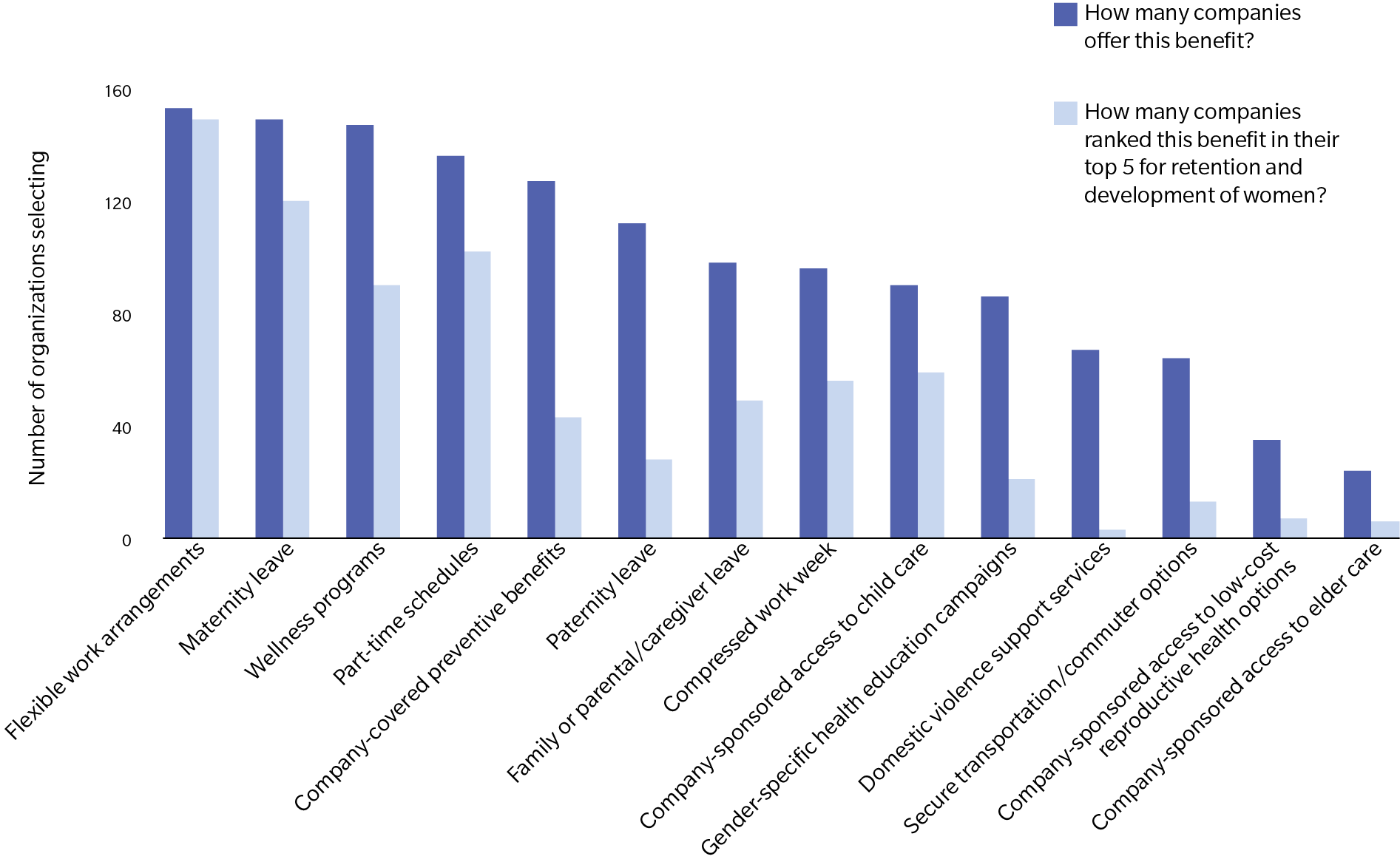Well-intended Gender Diversity Efforts Not Moving the Needle
The following is an extract from “When Women Thrive, Businesses Thrive,” a report on Mercer’s compelling new study of gender diversity in the workplace. Results are based on 178 submissions from 164 companies in 28 countries covering 1.7 million employees.
As organizations have sought to attract and retain more women over the past several decades, many have added a plethora of programs and benefits intended to provide women and other employees with additional flexibility and support. By offering everything from health care coverage, family leave, and assistance with child care to onsite gyms, lactation rooms, and beauty salons, organizations have provided real benefits to women and others struggling to combine family and domestic responsibilities with careers. It seemed logical to assume that by continuing to add programs, organizations could continue to make progress in attracting and retaining women.
However, what this research makes clear is that the provision of programs, while certainly aligned with the needs of women and likely helpful in improving gender diversity in the workplace in the past, is no longer enough — and may even lull some organizations into complacency. For example, although flexible work schedules and maternity leave are associated with higher current female representation throughout organizations, they are also correlated with slower improvement in female representation at the executive level. And while organizations that offer a greater number of such programs also have greater representation of women, we again see slower improvement in female representation in executive positions.
We see these results as an indication that some organizations are substituting active management of their female talent through the different stages of their professional lifecycle — and real leadership engagement in improving gender equality — with off-the-shelf programs that are insufficient on their own to promote advancement into the leadership ranks. In fact, without proactive and engaged support for her career development, a woman who avails herself of programs that help provide better work/life balance as needed during certain periods of her career may be unwittingly deprived of the encouragement or opportunity to seek new challenges and advance her career during other stages of her professional lifecycle. In addition, ingrained bias and negative stereotypes within the organization may put any employee who takes advantage of options such as flexible schedules and leave at a disadvantage when it comes to performance ratings and promotion.
Francine Blau and Lawrence Kahn (2013), Cornell labor economists, summarize part of the challenge with managing flexible leave programs as follows:
“While parental leave and part-time … policies appear to raise women’s labor force participation, it is plausible that [they] reduce the likelihood that women will be able to enter high-level jobs, which generally require full-time, full-year, career-long commitments. [Furthermore], more generous leave policies and a higher incidence of part-time [opportunities] may lead employers to engage in statistical discrimination against women as a group, anticipating that women will take advantage of such opportunities.”
As evidence that such stigma might be attached to women leveraging such programs, we found that it does indeed matter who uses available programs. We asked organizations to report which benefit or talent management programs were most important for retaining and developing female talent. Greater usage of organizations’ “top 5” programs (those ranked as most important for retaining and developing female talent) by women is associated with higher current female representation [in executive roles]. But similar usage by women and men is associated with improved future female representation. We also see improved future female representation when programs are more widely used.

We conclude that the impact of various programs and benefits on gender diversity has more to do with the way the programs and the employees who take advantage of them are led and managed than it does with simply whether or not the program is offered. As further evidence of this, we found that, although offering maternity leave to employees is correlated with lower projected representation of women at the executive level, among organizations that also ranked maternity leave as one of the top five benefits for meeting the needs of women, there is no negative correlation between the program and future female representation. This suggests that companies that view maternity leave as a critical program to strengthen diversity are actively managing their employees before and after their leaves, with no negative implications for overall career development.
From the conclusion of the report, here is some advice on how to help ensure that benefit programs support true gender diversity:
- Broaden your understanding of what it takes to support women. Look beyond typical programs when considering how best to support and enable all talent. For example, we find that gender-specific programs focused on either health or financial wellness, neither of which is a common practice today, are associated with improved diversity.
- Implement new programs and benefits ONLY in the context of an enabling environment. Foster an organizational culture that is comfortable with different employees contributing to the overall enterprise in different ways and that actively manages women so they effectively utilize available programs and benefits in the context of their overall career development.
Download the full report and learn more about how Mercer can help address gender diversity issues.
